5 have author last names that start with R have author last names that start with R
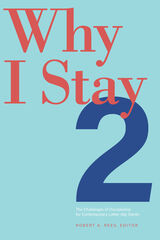
Twenty-one women and men discuss what it is about Mormonism that keeps them part of the fold. Their deep, unique experiences make their individual travels even more compelling. Kimberly Applewhite Teitter, growing up in the South as a Black Latter-day Saint, often encountered well-meaning Latter-day Saints whose words messaged the idea that she was at some level an outsider or perhaps not as authentically Mormon as others in her congregation. Thus, she writes, “At the end of the day I’m still Black—still have felt the weight of proving that I represent the church I’ve fought so hard for my entire life.” Yet the very episodes that could have driven her from the church became lessons on the meaning of discipleship.
For Carol Lynn Pearson, staying boiled down to two reasons: “I find a great deal of love in this church,” and “where I do not find love, I have an opportunity to help create love.” The stories she shares illuminate that mantra. Mitch Mayne, an openly gay man, has faced many challenges by his decision to stay. “Most days, it seems I can’t be Mormon enough for my LDS community, and I can’t be gay enough for my LGBT fellows.” In his essay, he answers the question many have asked: “Why don’t you just leave the church?”
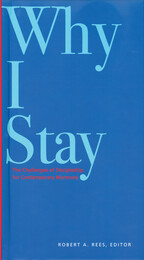
Mormonism is a community with two faces: progressive and conservative. This is true of nearly all faith traditions, which can be alternately open or defensive, traditional or innovative, accepting or judgmental. In the case of the LDS Church, it continues, a century after having shaken off the stigma of polygamy, three decades after embracing blacks as equals, and in the face of international growth, to wrestle with freeing itself from its past insularity. In doing so, it will find its place within the larger religious world and its accommodation to the challenges of modernism.
This all represents a challenge for individual members, especially for artists, scholars, and independent thinkers. The poet Robert Haas has made a distinction between religion, which is “communal worship centered on shared ideas of the sacred,” and spirituality, which “has to do with the individual soul’s struggle with its own meaning.” In this anthology, sixteen Latter-day Saints explain how they balance the demands of religion and spirituality in the modern Church. It brings to mind the example of LDS educator Lowell Bennion who offered the image of carrying water on both shoulders to explain the binary nature of balancing faith with reason, institutional commitment with individual integrity, obedience with love.
It is encouraging to discover so many Latter-day saints who, the editor writes, “neither stay with their faith blindly nor leave it rebelliously, but rather choose to struggle with challenges and strive for a more mature discipleship.” The contributors to this anthology are Lavina Fielding Anderson, Mary Bradford, William Bradshaw, Claudia L. Bushman, Fred Christensen, Lael Littke, Armand Mauss, Chase Peterson, Grethe Peterson, J. Frederick “Toby” Pingree, Gregory Prince, Robert A. Rees, Tom Rogers, William D. Russell, Cherry Bushman Silver, and Morris Thurston.
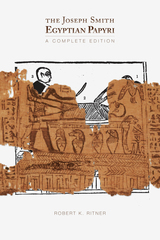
This book marks the publication of the first, full translation of the so-called Joseph Smith Egyptian papyri translated into English. These papyri comprise “The Breathing Permit of Hor,” “The Book of the Dead of Ta-Sherit-Min,” “The Book of the Dead Chapter 125 of Nefer-ir-nebu,” “The Book of the Dead of Amenhotep,” and “The Hypocephalus of Sheshonq,” as well as some loose fragments and patches. The papyri were acquired by members of the LDS Church in the 1830s in Kirtland, Ohio, and rediscovered in the mid-1960s in the Metropolitan Museum of Art in New York. They served as the basis for Joseph Smith’s “Book of Abraham,” published in Nauvoo, Illinois, in 1842 and later canonized.
As Robert K. Ritner, Professor of Egyptology at the Oriental Institute, University of Chicago, explains: “The translation and publication of the Smith papyri must be accessible not merely to Egyptologists but to non-specialists within and outside of the LDS religious community for whom the Book of Abraham was produced.” Dr. Ritner provides not only his own original translations but gives variant translations by other researchers to demonstrate better the “evolving process” of decipherment. He also includes specialized transliterations and his own informed commentary on the accuracy of past readings. “These assessments,” he notes, “are neither equivocal nor muted.” At the same time, they do not have a “partisan basis originating in any religious camp.”
The present volume includes insightful introductory essays by noted scholars Christopher Woods, Associate Professor of Sumerology, University of Chicago (“The Practice of Egyptian Religion at ‘Ur of the Chaldees’”), Marc Coenen, Egyptian Studies Ph. D., University of Leuven, Belgium (“The Ownership and Dating of Certain Joseph Smith Papyri”), and H. Michael Marquardt, author of The Revelations of Joseph Smith: Text and Commentary (“Joseph Smith’s Egyptian Papers: A History”). It contains twenty-eight photographic plates, including color images of the primary papyri (with corrected alignment for Papyrus Joseph Smith 2) and other relevant items.
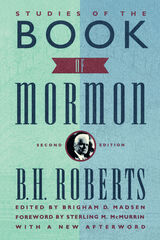
In this and other research, it was Roberts’s proclivity to go wherever the evidence took him, in this case anticipating and defending against potential future problems. Yet the manuscript was so poorly received by fellow church leaders that it was left to Roberts alone to decide whether he had overlooked some important piece of the puzzle or whether the Mormon scripture’s claims were, in fact, illegitimate. Clearly for most of his colleagues, institutional priorities overshadowed epistemological integrity.
But Roberts’s pathbreaking work has been judged by the editor to be methodologically sound–still relevant today. It shows the work of a keen mind, and illustrates why Roberts was one of the most influential Mormon thinkers of his day. The manuscript is accompanied by a preface and introduction, a history of the documents’ provenances, a biographical essay, correspondence to and from Roberts relating to the manuscript, a bibliography, and an afterword–all of which put the information into perspective.
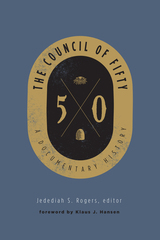
One member downplayed the significance of this secret legislative body in 1849 as “nothing but a debating School.” On the contrary, a typical meeting included decisions regarding irrigation, fencing, and adobe housing, after which the group sang a song written by Parley P. Pratt: “Come ye sons of doubt and wonder; Indian, Moslem, Greek or Jew; … Be to all a friend and brother; Peace on Earth, good will to men.” Two weeks later, the council called for “blood to flow” to enforce its laws.
As the nineteenth century waned and the LDS Church moved toward the American mainstream, ending its emphasis on the imminent End of Days, there was no longer a need for a Church-managed municipal group destined to become the millennial world government. The council became irrelevant but survives today as a historical artifact available in fragmented documentary pieces which are presented here for the first time.
READERS
Browse our collection.
PUBLISHERS
See BiblioVault's publisher services.
STUDENT SERVICES
Files for college accessibility offices.
UChicago Accessibility Resources
home | accessibility | search | about | contact us
BiblioVault ® 2001 - 2024
The University of Chicago Press









